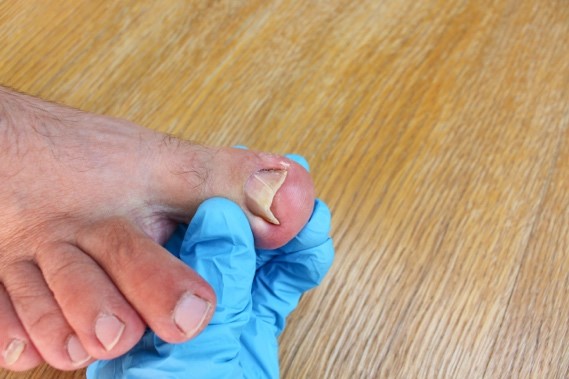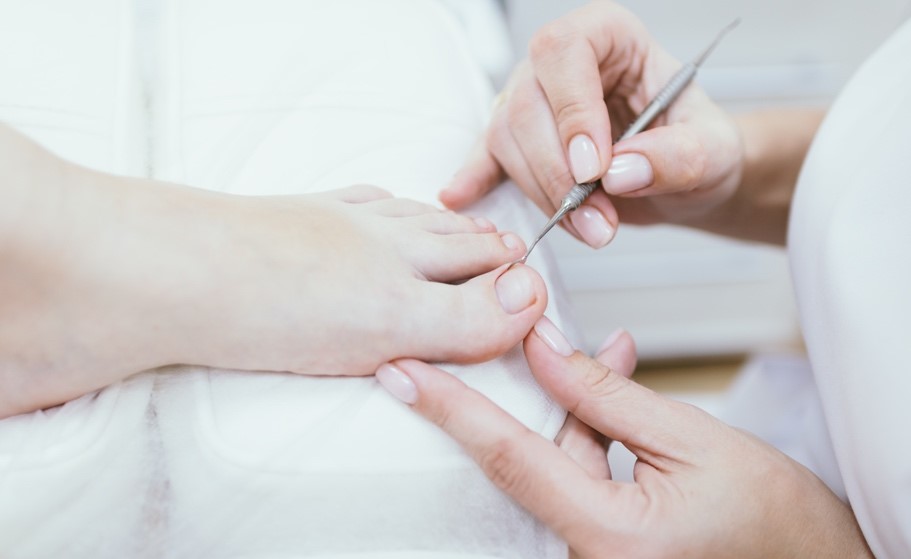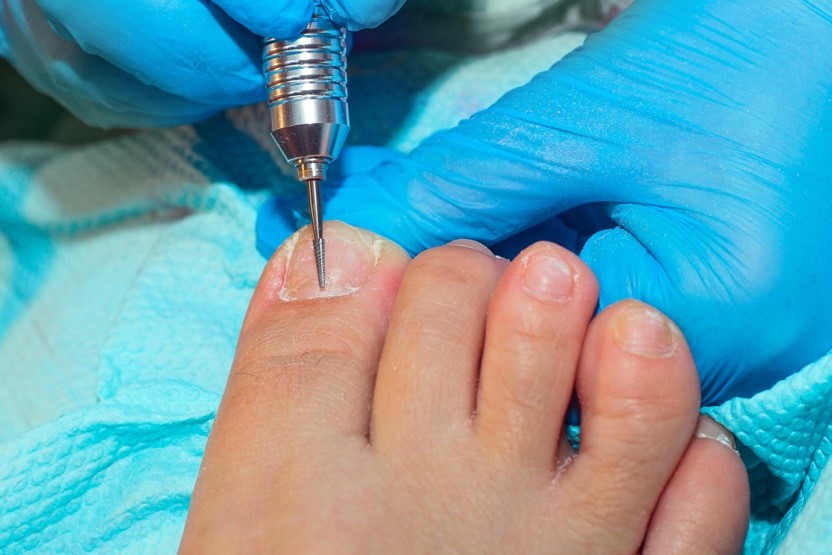What is Ingrown toenail?
An ingrown toenail, also known as onychocryptosis, is a prevalent issue wherein the nail plate penetrates the skin surrounding the toenail, leading to significant discomfort, inflammation, and an increased risk of infection if not addressed. This condition commonly affects the big toe, especially among adolescents and young adults, although it can manifest at any age. Several factors are believed to contribute to the development or exacerbation of ingrown toenails, with varying levels of supporting evidence. These factors include improper nail trimming techniques, excessive sweating, wearing poorly fitting shoes, nail abnormalities, injuries, being overweight, and swelling in the feet and ankles.

General Measures for Ingrown Toenails
To tackle ingrown toenails effectively, it’s essential to take some general steps. Firstly, wearing proper footwear is crucial, and nail trimming should be done correctly. This means avoiding cutting the nail plate’s lateral margins too deeply.
Additionally, it’s important to address any underlying factors contributing to ingrown toenails, such as hyperhidrosis (excessive sweating) or onychomycosis (fungal infection of the nail). You can also try soaking the affected toe in warm, soapy water or Epsom salt solution for a few minutes. Following this, applying a topical antibiotic ointment can provide relief. In cases of hypertrophic granulation tissue, applying topical steroids may help reduce inflammation.
Additionally, it’s important to address any underlying factors contributing to ingrown toenails, such as hyperhidrosis (excessive sweating) or onychomycosis (fungal infection of the nail). You can also try soaking the affected toe in warm, soapy water or Epsom salt solution for a few minutes. Following this, applying a topical antibiotic ointment can provide relief. In cases of hypertrophic granulation tissue, applying topical steroids may help reduce inflammation.
Treatment / Management of Ingrown toenail
Treating ingrown toenails involves different options, from simple care to surgery. When to seek treatment depends on how bad the problem is, whether it keeps coming back, and other factors like allergies, pregnancy, or bleeding issues. For mild to moderate cases, simple treatments usually work. But if the problem is severe and affects your ability to walk, surgery might be needed.
Conservative Treatment Options
- Resection part of ingrown toenail: Using a micro-surgical blade podiatrist removes the offending toenail to reduce the pressure.
- Cotton-Wick Insertion: Using a specialised tool, a small piece of cotton is delicately placed beneath the corner of the ingrown nail to provide gentle elevation.
- Dental Floss Technique: Instead of cotton, dental floss is utilized to separate the ingrown nail from the surrounding skin.
- Gutter Splint or Sleeve: A tailored vinyl intravenous infusion tube is cut to size and affixed along the lateral edge of the nail to offer structural support and alleviate discomfort.
- Taping Procedure: Employing adhesive tape, the skin adjacent to the ingrown nail is gently pulled away to reduce pressure, offering a safe and relatively painless solution.
- Nail Brace (Bracenfix): Utilising acrylic composite material positioned near the nail’s base, this technique enables gentle correction of the ingrown nail deformity through careful manipulation.


Surgical Techniques
When it comes to surgical procedures for ingrown toenails, they’re typically done under local anesthesia (LA).
One common surgical option is chemical partial matricectomy, often using phenol. This method tends to have a higher success rate and is less painful compared to mechanical matricectomy.
Successful outcomes often rely on ensuring good hemostasis. Alternatives to phenol include other chemical agents like sodium hydroxide and trichloroacetic acid.
One common surgical option is chemical partial matricectomy, often using phenol. This method tends to have a higher success rate and is less painful compared to mechanical matricectomy.
Successful outcomes often rely on ensuring good hemostasis. Alternatives to phenol include other chemical agents like sodium hydroxide and trichloroacetic acid.
